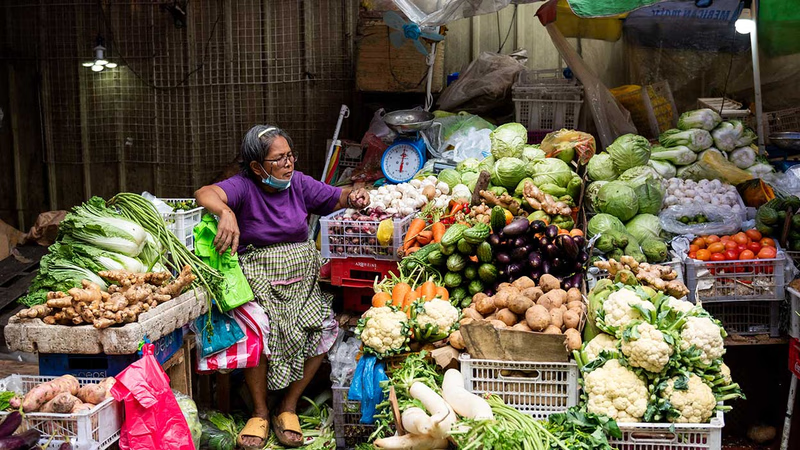
The Philippines, with a population of over 110 million, is a rapidly growing economy in Southeast Asia. The country’s economy relies heavily on sectors such as services, agriculture, and manufacturing. The services sector, particularly IT, business process outsourcing (BPO), and tourism, contributes significantly to the country`s GDP. The Philippines is a major exporter of agricultural products like coconut, bananas, pineapples, and sugar. Additionally, manufacturing industries, including electronics, semiconductors, and garments, play a crucial role in its exports. In recent years, the Philippine economy has seen stable growth, although it has faced challenges due to global events like the COVID-19 pandemic.
The country`s monetary system is centered around the Philippine peso (PHP), and its banking system is relatively developed, consisting of both public and private banks. The Bangko Sentral ng Pilipinas (BSP), the country’s central bank, plays a key role in shaping monetary and fiscal policies. The BSP is responsible for controlling inflation and interest rates to ensure economic stability. The banking sector in the Philippines is heavily regulated by the government, with ongoing efforts to improve digital banking services and expand financial inclusion, especially in underserved regions.
In terms of international trade, the Philippines operates in an open market and has extensive trade relationships with countries across the globe. The country imports a wide range of goods, including industrial raw materials, fuel, machinery, and food products. On the export side, the Philippines is a key supplier of electronic components, garments, and agricultural goods to major markets like the United States, China, Japan, and Europe. However, the Philippines faces challenges due to its dependence on imported energy and raw materials.
Trade relations between the Philippines and countries in the Middle East and West Asia are particularly important in the energy sector. The Philippines imports significant quantities of crude oil and natural gas from countries like Saudi Arabia, the United Arab Emirates, and Qatar, given its reliance on energy imports to meet domestic demand. In return, the Philippines exports agricultural products, processed food, and migrant labor to the region. The Philippines has a large overseas workforce in the Middle East, particularly in domestic services, construction, and healthcare. These overseas Filipino workers (OFWs) send remittances back home, which play a crucial role in supporting the Philippine economy.
Overall, with its stable economic growth and efforts to diversify its economy, the Philippines presents significant opportunities for trade and investment, particularly with countries in the Middle East and West Asia. The strong demand for energy in the Philippines and its growing role in the global supply chain make it an attractive partner for countries in these regions.
-
 Fernando Somejo 3 months ago
Fernando Somejo 3 months ago Philippines
Meteorites stone
Philippines
Meteorites stone
Chondrites, achondrites, martian, lunar meteorites stoneDetails
-
 Noriefil Camance 3 months ago
Noriefil Camance 3 months ago Philippines
Wild Philippine Agarwood
Philippines
Wild Philippine Agarwood
Pure wild Agarwood from Philippines forest with excellent aroma, best oil and great color.Details
-
 Garom M.Koransang 7 months ago
Garom M.Koransang 7 months ago Philippines
Fossilrock
Philippines
Fossilrock
Buyers have to see and test.my itemDetails
In the realm of global trade, the Philippines is exhibiting unique patterns, notably its interaction with West Asian markets. A prominent observation from the World Bank data reveals the country"s GDP growth trajectory from $394 billion in 2021 to an estimated $437 billion in 2023. This is contrasted with a global GDP average of $883 billion for 2023, highlighting the Philippines" rapidly growing economy, yet underscoring potential for further expansion. Examining sector contributions, the service sector dominates with 62. 4% of GDP in 2023, surpassing the global average of 52. 8%. This indicates a robust service industry, providing fertile ground for investments in trade services and logistics, particularly in West Asia where demand for such services is burgeoning. Trade data from the WTO illustrates a decline in merchandise import values from 137 in 2021 to 91.
7 in 2023, compared to a global average of 101. 1. This downward trend suggests a contraction in import expenditures, potentially driven by the Philippines" strategic pivot towards boosting domestic production. However, import volume indices at 100. 6 in 2023, up from 102. 3 in 2022, indicate sustained demand for goods, presenting opportunities for West Asian exporters to fill the supply gap. Inflation remains a concern, with consumer prices rising by 5. 9% in 2023, above the global average of 8.
6%, suggesting relatively controlled inflationary pressures compared to other regions. This macroeconomic stability can appeal to investors seeking to mitigate risks in emerging markets. In the context of foreign exchange, the Philippine peso has depreciated, with an exchange rate of 55. 6 per US dollar in 2023, against a global average of 697. 6. This depreciation can enhance the competitiveness of Philippine exports to West Asia, promoting trade engagements. Aritral. com, as an AI-driven B2B platform, can play a pivotal role in connecting Filipino businesses with West Asian counterparts through its services like AI-powered marketing and global sales assistance.
Entrepreneurs can elevate their market presence by creating a profile on Aritral. com, tapping into a network designed to streamline international trade operations and foster business growth across regions. "





